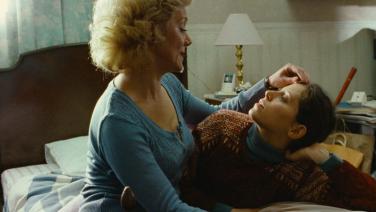
La mujer rubia (The Headless Woman), Lucrecia Martel, Argentina-Spain-France-Italy, 2008, 87’
The Argentine title of this film is La mujer sin cabeza. Therefore, let's start with that disappeared head: Vero is an upper-middle-class woman in her 50s, who drives her car along a road in the middle of the countryside. It is when an accident happens and when all the defence and concealment mechanisms of Vero and those around her are activated. This is the start of this story, this descent, this account of the fears that surround us and which are part of us. What follows is a state of total confusion: both visual (Martel again playing with off-camera events, with soft focus, with faraway sounds), and everyday events: it is not so much about playing psychology games as about following the character in their day to day, in their routines, in their most simple activities, as that is where the entrance to the abyss can hide.
Once again, the director explores a closed social environment -the family- and opposes the character with this construction. At the same time, the pace of the film -unsettled, hypersensitive, trembling, distorted- accompanies the story and the characters without the need for easy conclusions nor prior judgements. It's about exploring, unravelling hidden meanings, listening to what happens on the other side, within, very deep within, that disappeared blonde head.
The film, also co-produced by El Deseo, premièred in the Official Section of the Cannes film Festival.
Once again, Lucrecia Martel explores a closed social environment -the family- and opposes the character with this construction. At the same time, the pace of the film -unsettled, hypersensitive, trembling, distorted- accompanies the story and the characters without the need for easy conclusions nor prior judgements.
